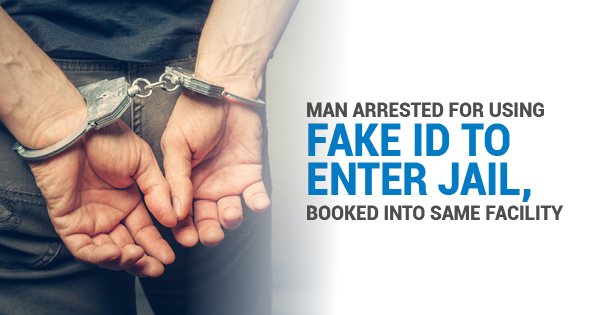Man Arrested for Using Fake ID to Enter Jail, Booked into Same Facility

A California man was arrested after trying to enter a Los Angeles County jail facility with a fake ID. Greg Baghoomian tried to get into the Inmate Reception Center by quickly flashing a badge to security staff, according to WTKR. When deputies asked to see his credentials again, Baghoomian left the building and ran towards the L.A. County Men’s Central Jail nearby.
When the deputies saw where he was headed, they called the Men’s Central Jail officials, who then detained Baghoomian.
Authorities say Baghoomian had a large knife, two Taser devices, gloves, and fake FBI credentials with him.
He was arrested on suspicion of bringing a deadly weapon into a correctional facility and impersonating an officer. He was booked at the Inmate Reception Center, the same place he tried to initially sneak into. While it may have been easier to get away with fake IDs in the past, most ID badges, driver’s licenses, and other official documents now feature barcodes or other scannable features, and ID readers and magnetic card scanners are all that is required to bust would-be con artists.
Why ID Verification Systems Are Important in Correctional Facilities
All around the world, businesses and organizations utilize the help of ID scanners for security purposes. This is especially important in places like correctional facilities to help with visitor management. Visitor management is a crucial aspect of correctional facilities, and many facilities use ID readers to verify a person’s identity before allowing them inside. The magnetic strip on the back of an ID card can allow card readers to verify information about the user, like their name and social security number. With magnetic strips being able to hold up to 60 characters, IDs can hold quite a bit of information about a person.
Besides simply verifying a person’s identification, magnetic card scanners can help correctional facilities with other tasks as well. In some cases, a higher level of identity verification may be necessary. If someone seems suspicious or uneasy, security personnel could pull up more information about them with a magnetic card scanner system. These systems can pull up background information about the visitor in a very short amount of time, giving security personnel the information they need quickly.
Additionally, magnetic card scanner systems can help with data storage. Some facilities may have visitors sign electronic documents and keep their ID information on file. This allows security personnel to quickly access their file each time they visit. This can also be beneficial if someone is not allowed to visit because that information will come up when their ID is scanned.
Overall, magnetic card readers can help correctional facilities remain secure. By being able to keep track of who is visiting, when they’re visiting, and any other information that can be stored in the system, these facilities will be better able to protect everyone inside.
